NASA APOD #938-944
#938 The Keyhole Nebula January 12, 1998
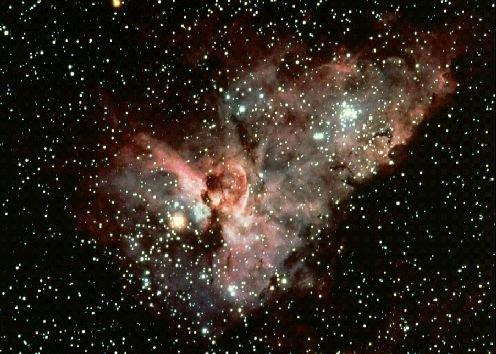
“The dark dusty Keyhole Nebula gets its name from its unusual shape. Officially designated NGC 3324, the Keyhole Nebula is a smaller region superposed on the larger Eta Carina Nebula. These nebulae were created by the dying star Eta Carina, which is prone to violent outbursts during its final centuries. Noted and discussed as early as 1840 when a spectacular explosion became visible, the Eta Carina system now appears to be undergoing an unusual period of change. An emission nebula that contains much dust, the Keyhole Nebula is roughly 9,000 light years distant. This photogenic nebula can be seen in the south with even a small telescope. The Keyhole Nebula was recently discovered to contain highly structured clouds of molecular gas."
Copyright: AURA
#939 El Niño Water Rhythm January 13, 1998
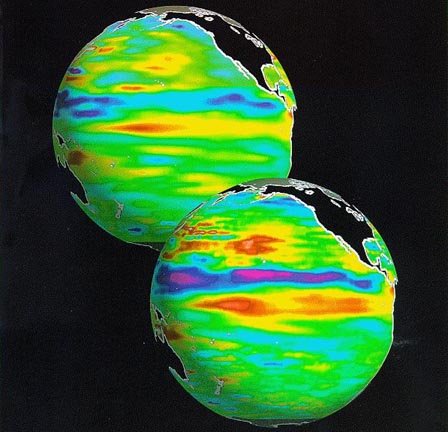
“This year's El Niño is the strongest ever recorded. The large amount of warm water in the Pacific Ocean near the equator is causing unusual weather all over planet Earth. The above false-color images of Earth show the relative levels of warm water between normal (upper left) and the comparatively mild El Niño of 1995 - 1996. Red indicates a high water level. Detailed measurements of this years El Niño indicate the warm water level is rising and falling in rhythmic fashion, possibly in response to changing wind patterns."
Copyright: Public domain
#940 A Distant Destiny January 14, 1998

“Watching galaxies recede, observational astronomers of the 20th century discovered an astounding fact - the Universe is expanding. Will it continue to expand forever? The speed of light is finite so looking into the distant Universe is equivalent to looking at the distant past. These three Hubble Space Telescope images show some of the most distant detectable supernovae - stellar explosions, five to seven billion light-years away, which occurred before the Sun was formed. As recently reported, the apparent brightness and expansion velocities associated with these and other distant supernovae are beginning to suggest that the expansion rate of the Universe has not slowed but increased over time and that the expansion of the Universe is destined to continue."
Copyright: Public domain
#941 Eugene Shoemaker: 1928-1997 January 15, 1998
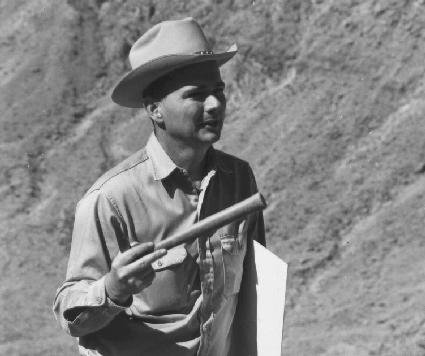
“ugene Shoemaker's passion was Astrogeology. He dreamed of going to the Moon. Credited with inventing the branch of Astrogeology within the U.S. Geological Survey, his contributions to the field and the study of impact craters, lunar science, asteroids, and comets are legendary. Though his own career as an astronaut/geologist was sidelined by a health problem, he helped train the Apollo astronauts in geology and the investigation of the lunar surface. Seen here at Meteor Crater, Arizona in the mid 1960s, Shoemaker was killed in a tragic car accident in July 1997. He is survived by his wife and professional colleague, Carolyn, and children. In a fitting tribute conceived by a former student, Eugene Shoemaker's ashes were placed on-board the Lunar Prospector spacecraft which has now successfully reached a polar mapping orbit around the Moon. After completing its scientific mission, the spacecraft will ultimately impact the lunar surface."
Copyright: Public domain
#942 Dusting Spiral Galaxies January 16, 1998
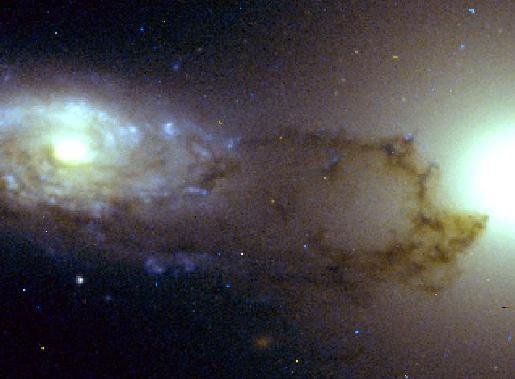
“How much dust is in spiral galaxies? Does it block out much of the starlight? Because astronomers rely on an accurate knowledge of galaxy properties to investigate a wide range of problems, like galaxy and quasar evolution and the nature of dark matter, answers to simple questions like this are key. This striking, detailed Hubble Space Telescope image of dust in the outer reaches of a foreground spiral galaxy (left) back lit by an elliptical galaxy offers an elegant approach to providing the answers. As expected, dust lanes in the foreground galaxy seem to be associated with spiral arms. But surprisingly, many dust regions are not completely opaque and the dust is more smoothly distributed than anticipated. This "overlapping" pair of galaxies is cataloged as AM1316-241 and is about 400 million light-years away in the constellation Hydra."
Copyright: Public domain
#943 At The Core Of M15 January 17, 1998
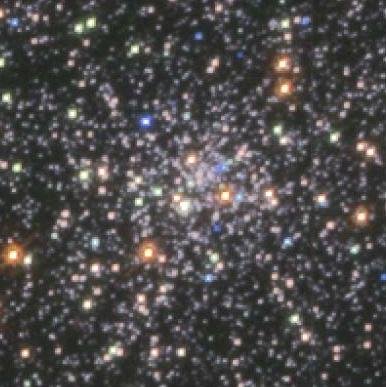
“Densely packed stars in the core of the globular cluster M15 are shown in this Hubble Space Telescope (HST) image. The star colors roughly indicate their temperatures - hot stars appear blue, cooler stars look reddish-orange. The region visible here is only about 1.6 light-years across, compared to the 4.3 light-year distance to our own Sun's nearest neighbor. Imagine the night sky viewed from a planet orbiting a star near this cluster's center! M15 has long been recognized as one of the densest clusters of stars in our galaxy outside of the galactic center itself. Even the unprecedented resolving power of the HST cameras could not separate the individual stars in its innermost regions. However, this HST image reveals that the density of stars continues to rise toward the cluster's core, suggesting that a sudden, runaway collapse due to the gravitational attraction of many closely packed stars or a single central massive object, perhaps a black hole, could account for the core's extreme density."
Copyright: Public domain
#944 Saturn, Rings, and Two Moons January 18, 1998
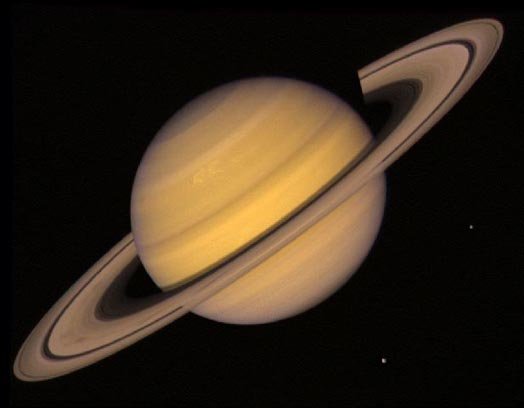
“NASA's robot spacecraft Voyager 2 made this image of Saturn as it began to explore the Saturn system in 1981. Saturn's famous rings are visible along with two of its moons, Rhea and Dione which appear as faint dots on the right and lower right part of the picture. Astronomers believe that Saturn's moons play a fundamental role in sculpting its elaborate ring system. A robot spacecraft named Cassini was launched last October and is expected to rendezvous with the giant gas planet in 2004."
Copyright: Public domain
Upvote! Resteem! Comment! As you like it! Thank you for attention!